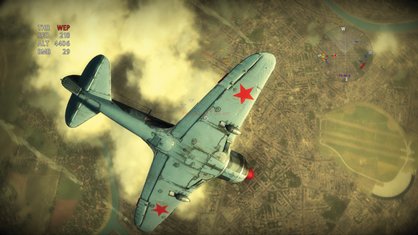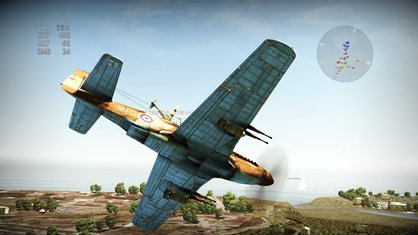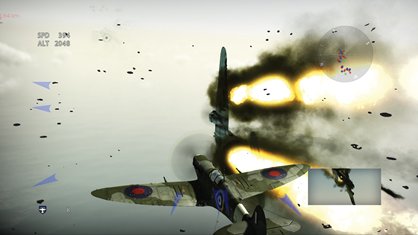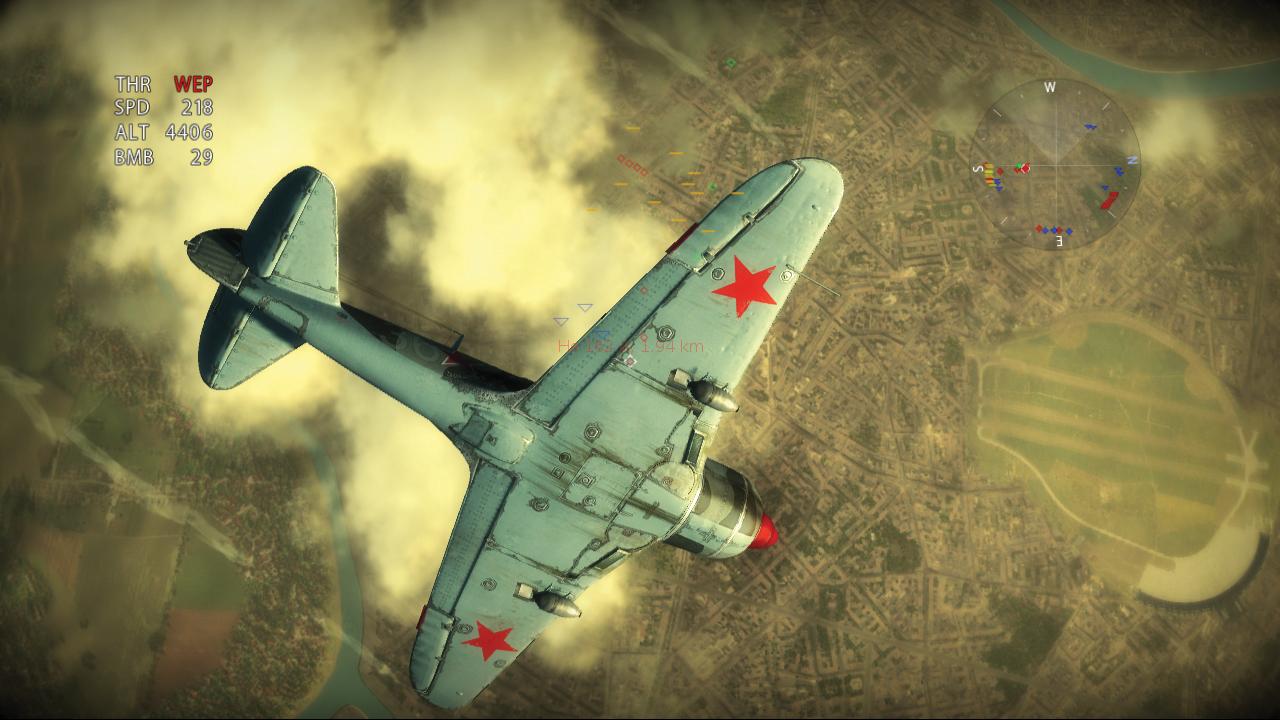Why you can trust GamesRadar+
It’s as hardcore as you want it to be, too. Arcade difficulty makes Birds of Prey as accessible as Blazing Angels or Ace Combat, with simple controls and a plane which proves impossible to stall in even the tightest turns. It’s still a smarter, more tactical, and more exciting game than AC6 or Angels, but the physics are simplified and planes have a basic energy bar which can be depleted with a decent well-placed burst.

Step up to Realistic or the near-suicidal Simulation setting and it’s a different world. Every plane takes skill to pilot and every shot takes time to line up; once you finally have a bead on the enemy they soak up ten times the damage, with only hits on critical parts downing planes quickly. The damage model for both sides changes – enemies can pummel you with rounds and still your plane will limp on, the handling becoming rougher, turning becoming slower, your engine gushing smoke and oil.
You’ll pound your enemies with hundreds of bullets before you realize that ‘Realistic’ means realistic – bullet holes in an empty fuselage will do nothing but give the pilot air conditioning, but just a mere handful of bullets into the engine or fuel tank will instantly end his life or send him reaching for the parachute.
On consoles, using a controller, Realistic is the right setting for Sturmovik, eliminating Sim mode’s high-end plane maintenance but still making every dogfight a war which can be won or lost by more than bad aim or poor steering. You’re suddenly aware of how unnatural it is to be so high in the sky and of how fragile you are in these wafer-thin flying crates. It takes a delicate touch to out-maneuver planes which match or trump you in aerial combat – crank the analogue stick too far and you’ll end up in a flat spin; turn too gently and he’ll be on your tail in seconds. Gut reactions are vital.

If it all sounds somewhat daunting you’ll be surprised by the skills you may already have. It’s the same kind of brain work you employ taking a corner in a sim racer, entering the corner slowly so you can leave more quickly; you weigh your options and balance risk with reward. Will he take you on this corner if you slow too soon? Will you stall your plane if you bank too hard?
Birds of Prey’s biggest surprise is just how manageable it all is and how naturally you can take to it with just a few hours of fighting. Once you’ve got to grips with it, you’ll flick a switch in your brain and realize Sturmovik isn’t about downing 40 planes one after another, but four planes in sustained steel-jawed dogfights which leave wings in tatters and engines gushing smoke. Reality freed from the danger of sudden and agonizing death makes every engagement a Boys’ Own adventure you write yourself, where every hard-won kill is meaningful. During the course of a long campaign and a further 50 bonus missions which chart the entire course of the Second World War you’ll build your own catalogue of war stories. That story from the start really happened and it’s just one of dozens of tales worth telling.

IL-2 Sturmovik was already the greatest combat flight sim ever made, and Birds of Prey makes it prettier and more manageable without losing what makes Sturmovik... Sturmovik. Even with a handful of unfortunate omissions it’s the best air combat game we’ve ever got to grips with, and the best possible start to a franchise which deserves by rights to be as long-lived on console as it is on PC.
Sep 2, 2009
More info
| Genre | Flight |
| Description | In a world of arcade style, console flight games, one game challenges them all by being a super accurate sim. Does it have what it takes? Coming 2009. |
| Platform | "DS","Xbox 360","PS3","PSP" |
| US censor rating | "Teen","Teen","Teen","Teen" |
| UK censor rating | "Rating Pending","Rating Pending","Rating Pending","Rating Pending" |
| Release date | 1 January 1970 (US), 1 January 1970 (UK) |



